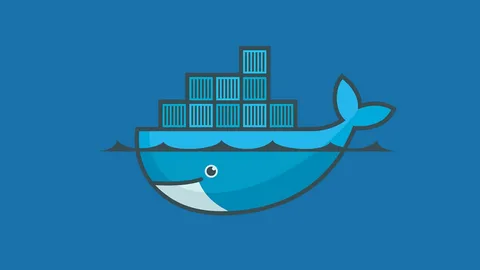Why is a web server 2-3x slower in WSL than in VMware? (same Docker stack)
Answer a question
I have a docker compose setup that consists of:
- wordpress:php8.1
- mariadb:latest
- traefik:v2.7
To rule out Windows networking differences, this is the benchmark ran from inside:
curl --resolve example.com:443:172.18.0.3 --write-out '%{time_total}\n' --output /dev/null https://example.com
Where example.com is my custom domain, the IP is traefik container's current IP. I'm running the command SSH'd into VMware, and then from PowerShell after typing wsl. I copied the project from one place to the other as-is (kudos to Docker for portability).
It consistently returns ~0.2s for the VMware-backed instance, while it's 0.4-0.6s for WSL. It represents the load of the index.php itself which includes HTML source of a performant WP site, using a handcoded theme, no plugins. Locally, the staticized version doesn't seem to have a measurable difference, or very slight, all under 10ms on both systems.
Rest of the config:
- Windows 11 22H2 22610.1, WSL 2, VMware 16.1.0 build-17198959, Docker installed the same way and NOT Docker Desktop.
- UFW off.
- The vmdk and vhdx files are on the same SSD.
- Not using /mnt files across filesystems: everything is under the home folder of each system, respectively.
- OS is Ubuntu 20.04.4 LTS in WSL, and Ubuntu 21.10 in VMware. I tried Ubuntu 22.04 LTS in WSL and WMware too, same numbers.
- I even tried with Nginx + PHP-FPM variant of WP in WSL, and OpenLiteSpeed in VMware, nothing changes the numbers.
- The only difference I know of is that I had to
sudo update-alternatives --config iptablesand choose/usr/sbin/iptables-legacyto make Docker work in WSL, which on WMware I didn't need to do.
Answers
Several caveats with my answer:
- I wish I had a solution for you, but your primary question is why, which this should answer. And perhaps the data here will help lead us to a solution.
- I hope I'm wrong about this, and I may well be. I've always heard anecdotally that WSL2 performance was "near native." Your experience, however, coupled with my benchmarking below, leads me to believe that may not be the case.
That said, I'm going to report the data that I came up with in investigating this.
Short summary -- My benchmarking seems to show a substantial disk IO and memory performance delta between Hyper-V and VMWare that likely explains your WordPress results.
Supporting data and research
I started out with a similar test scenario as yours, but attempted to reduce it to as much of an MRE as I could:
Configuration
Hardware:
- i9500
- 16GB of RAM
- SSD
- Fairly fresh/recent install of Windows 11 Pro, with WSL2 enabled
- Fresh install of VMWare Workstation 16 Player
Virtualization:
- Default VMWare settings (2 CPUs, 4GB RAM)
- Default WSL2 settings (6 CPUs, 8GB RAM)
In both WSL2 and VMWare:
- Ubuntu Server 20.04 guest/distribution
- Docker installed in both (from official repo, not Docker Desktop)
ubuntu:latest(22.04) Docker image- MySQL server (MariaDB) and Sysbench installed in the Ubuntu 22.04 Docker container
Note that for the benchmarking below:
- I closed VMWare when testing WSL2, and vice-versa.
- I did not reboot the Windows host between tests. However, note that some of these tests were run multiple times, from both VMWare and WSL2/Hyper-V with no substantial differences in the results, so I do not believe a reboot would have changed the results measurably.
Benchmarking
I started off with some basic Sysbench testing of CPU and Memory. This was done from within the Docker container.
-
A simple
sysbench cpu --time=300 run:VMWare
WSL2
events/sec
1,250.97
1,252.89
# events
375,294.00
375,869.00
Latency
↪ Min
0.77
0.77
↪ Avg
0.80
0.80
↪ Max
31.40
4.07
↪ 95th percentile
0.87
0.86
Pretty much an even matchup there.
-
sysbench memory run:VMWare
WSL2
Total operations
64,449,416.00
6,456,274.00
MiB transferred
62,938.88
6,304.96
Latency
↪ Min
0.00
0.00
↪ Avg
0.00
0.00
↪ Max
23.63
0.12
↪ 95th percentile
0.00
0.00
Ouch - WSL2's Docker image is running at about 10% of the memory bandwidth of VMWare. I'll be honest; it was tough to spot this until I inserted the comma separators here in the table ;-). At first glance, I thought the two were on par.
-
I decided to skip straight to MySQL testing, also using Sysbench, since this would probably provide the closest match to your WordPress usage. This was done (after a corresponding
prepare) with:sysbench oltp_read_write.lua --mysql-user=root --time=300 --tables=10 --table-size=1000000 --range_selects=off --report-interval=1 --histogram runI'll skip the histogram and second-by-second results (but I have them saved if they are useful to anyone), but here's the summary data:
VMWare
WSL2
Queries performed
↪ Read
583,220
66,910
↪ Write
233,288
26,764
↪ Other
116,644
13,382
↪ Total
933,152
107,056
Transactions
58,322
6,691
Ignored errors
0
0
Reconnects
0
0
Latency
↪ Min
2.08
14.54
↪ Avg
5.14
44.83
↪ Max
71.67
193.75
↪ 95th Percentile
11.65
81.48
Again, ouch -- WSL2's MySQL performance (in Docker, at least) is benchmarking at around a tenth of that of VMWare. It's likely that most of your observed performance difference is represented in these results.
At this point, I began to suspect that the problem could be reproduced in a more generic (IO) way at the hypervisor level, ignoring WSL2 and Docker entirely. WSL2, of course, runs inside a (hidden to the user) Hyper-V backed VM, even though it doesn't require the full Hyper-V manager.
I proceeded to enable Hyper-V and install another Ubuntu 20.04 guest in it. I then installed Sysbench in both the VMWare and Hyper-V guest Ubuntu OS.
-
I then ran a disk IO comparison with:
sysbench fileio --file-total-size=15G --file-test-mode=rndrw --time=300 --max-requests=0 --histogram run(of course, with a corresponding
preparefirst)The results bore out the suspicion:
VMWare Ubuntu Guest
Hyper-V Ubuntu Guest
File operations
↪ Reads/sec
2,847.07
258.37
↪ Writes/sec
1,898.05
172.25
↪ fsyncs/sec
6,074.06
551.20
Throughput
↪ MiB/sec Read
44.49
4.04
↪ MiB/sec Written
29.66
2.69
Latency
↪ Min
0.00
0.00
↪ Avg
0.09
1.02
↪ Max
329.88
82.77
↪ 95th Percentile
0.32
4.10
One interesting thing to note during this stage was that the
prepareoperation for Sysbench was faster on Hyper-V by about 30% (IIRC). I did not capture the results since thepreparestep isn't supposed to be part of the benchmarking.However, after reading your comment and benchmarking results on
unzipbeing faster on WSL2, I'm thinking there may be a connection. Both VMWare and Hyper-V/WSL2 use dynamically resized virtual disks (sometimes called "sparse"). The size of the virtual disk on the host OS essentially starts as a near-0-byte file and grows as needed up to its maximum size.It may be that either:
- Hyper-V has a performance advantage when growing the virtual disk.
- Or in our testing, VMWare needed to grow the disk for these operations but the Hyper-V/WSL2 disk already had excess free space (from previously deleted files) available.
I cannot say for sure exactly which order I did things in, and the only way to know for sure would be to "shrink/compress" the virtual disks and try again.
Summary
It appears, to my naïve eye and at least on the "Pro" level of Windows, that Hyper-V has some serious performance limitations when compared to VMWare.
Tuning attempts and other comparisons
I did attempt some tuning of the Hyper-V system, but I'm no expert in that area. Regardless, there's not much that we as users could do to extend any Hyper-V tuning to WSL2 -- Microsoft would have to make most of those changes.
I did try converting the dynamic VHDX to a fixed one, in hopes that it would increase IO, but it did not make a substantial change either.
I've also now also tried:
-
Disabling swap in WSL2
-
Running the Sysbench tests with more threads
-
Setting a fixed 12GB RAM size for WSL2.
-
Running sysbench under WSL2 on my primary desktop, which has faster memory and an NVMe drive compared to my test system's SSD.
- Memory speed was significantly improved - Apples-to-oranges, but my desktop's memory numbers were comparable to VMWare running on the lower-end test system.
- However, this made no difference on the disk IO numbers. They were still in the same range as the test system.
Next steps
It would be great if you could, perhaps, run some similar benchmarking apart from your WordPress instance, since you already have the two environments set up. If we can corroborate the data, we should probably report it to, at least, the WSL team. They can hopefully either provide some guidance on how to tune WSL2 to near parity with VMWare, or work with the Hyper-V team on this.
Again, it does seem surprising to me that the disparity between Hyper-V and VMWare is so great. I still struggle to believe that I myself am not doing something wrong in the benchmarking.
更多推荐
 已为社区贡献35529条内容
已为社区贡献35529条内容










所有评论(0)